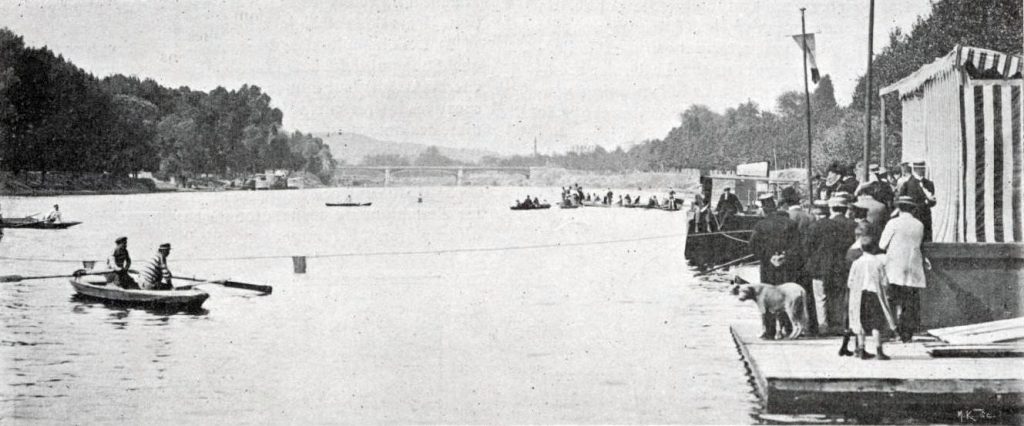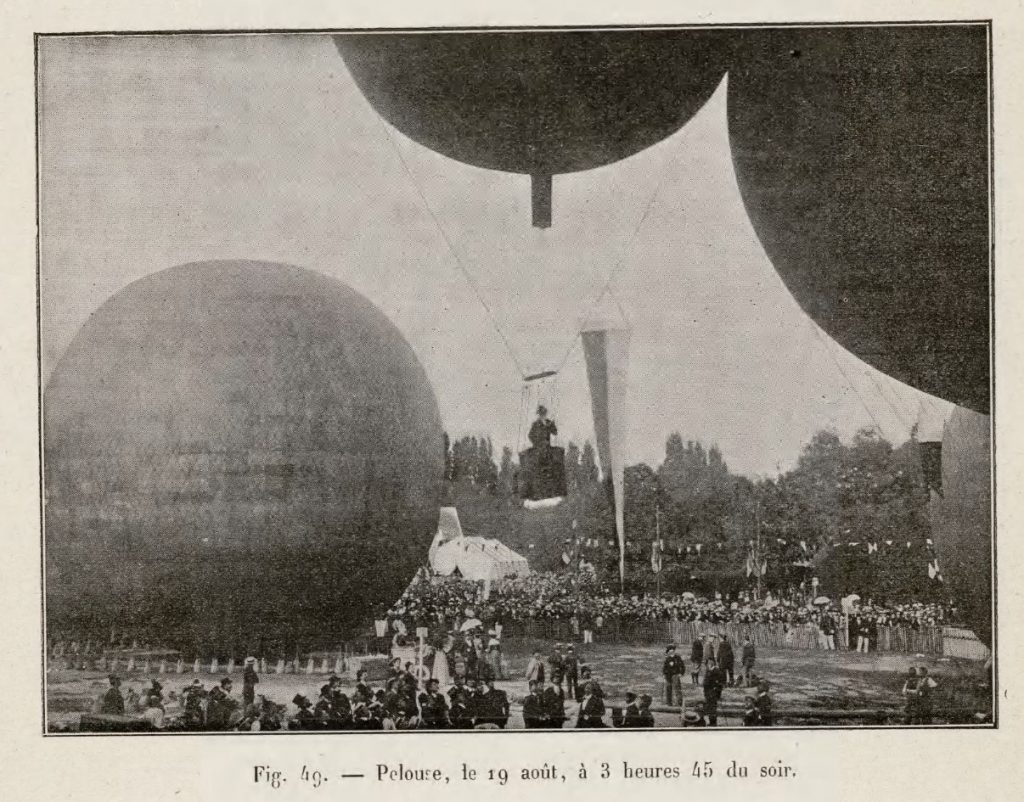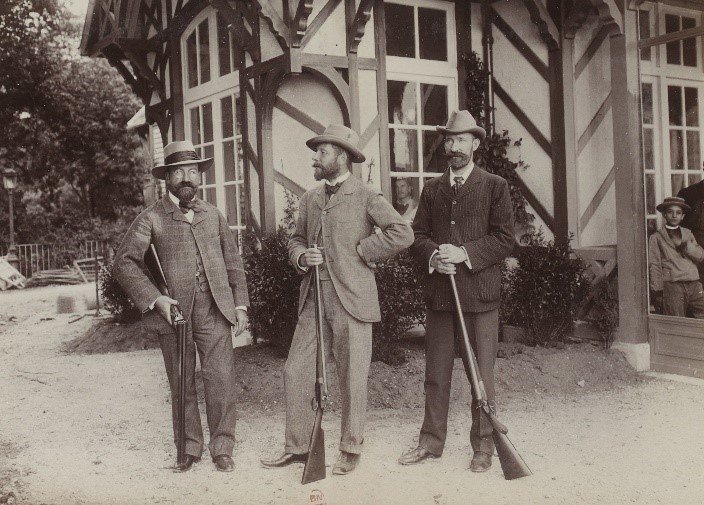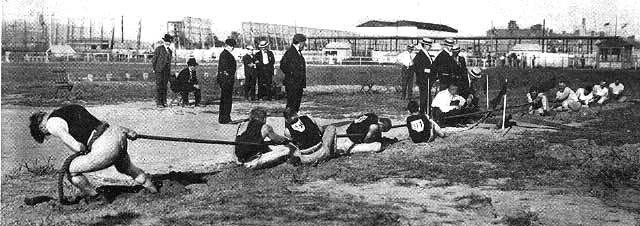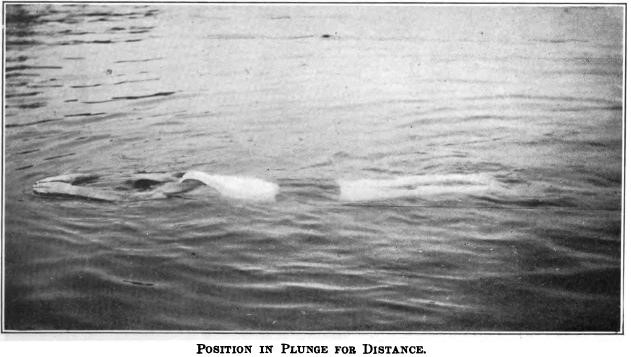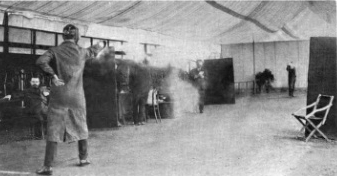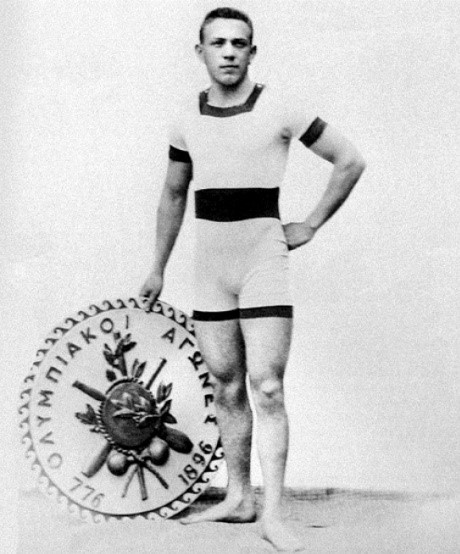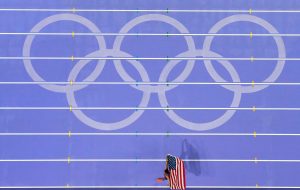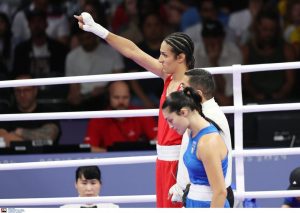The recent addition of breakdancing as an Olympic sport has generated heated discussions over what events should be on the Games’ roster. Admittedly, however, other categories that have stood the test of time stray quite far from your run-of-the-mill track and field (dressage and the modern pentathlon spring to mind.) In fact, the Olympics have racked up some pretty odd competitions in its 128-year history. Here’s a walkthrough of the most unusual Olympic events on record.
1896:
Sailors’ 100-meter freestyle
The first modern Games had four swimming events, one of which was reserved for sailors from the Greek Royal Navy. The exclusive category was not the success the International Olympic Committee (IOC) had hoped for, as only three sailors showed up to compete. To add insult to injury, they turned out to be twice as slow as contestants in the open category. Needless to say, they failed to win over the crowds.
1900:
Ballooning
The Paris Olympics are famous for their obscure sports, most of which debuted and ended there. One of these events involved pilots taking to the skies in gas balloons to compete in categories such as distance travelled, altitude, duration of flight, and ability to land at specific coordinates. Though intriguing, the event did not a appear in subsequent Games.
Live Pigeon Shooting
In this self-explanatory event, pigeons were released from traps in front of contestants, who were tasked with shooting as many as possible. Missing two in a row led to elimination. Nearly 300 birds were killed in the ensuing massacre. Animal rights protests led to the IOC replacing live pigeons with clay targets in subsequent Games.
Men’s underwater swimming
Competitors swam below the surface of the Seine in a straight line. One point was added for each second swimmers remained underwater and two points for each meter they swam (the winner managed an impressive 60 meters). Fourteen athletes from four nations participated, but the event lacked audience appeal and was subsequently scrapped.
Obstacle Swimming
In this odd event, contestants had to negotiate a 200-meter course in the Seine, climbing over poles and swimming under boats to reach the finish line. The Australian swimmer Frederick Lane won gold, beating Otto Wahle of Austro-Hungary by two seconds. Although it was discontinued, the IOC has not ruled out reintroducing the event in the future.
Poodle Clipping
Though, admittedly, never more than a test-event, the absurdity of a spectacle in which 128 competitors had to clip the fur of as many poodles as possible in two hours is simply too magnificent to ignore! Performing in front of 6,000 onlookers in the Bois De Boulogne, the winner Avril Lafoule clipped a total of 17 poodles in the allotted time. Unfortunately, the event didn’t make the cut for the 1904 Games.
1900–1920: Tug of war
Who knew that a game now largely consigned to children’s parties was featured in no fewer than five Olympics! At the 1900 and 1904 Games, teams of six competed, but this went up to eight tuggers per team at the next three. The first gold medalists were a combined team of Swedish and Danish athletes, who vanquished five French and one Colombian. The event was discontinued for logistical reasons after the Antwerp Games.
1904: Plunge for Distance
In this diving long jump event, contestants dove into the pool from a standing position and remained still for a maximum of 60 seconds or until their head broke the surface. Five athletes took part, all American, and William Dickey won gold after traveling 19.1 meters. The event, however, never… resurfaced.
1908: Dueling
Dueling was first introduced in the 1906 Intercalated Games, where contestants shot at dummies from 20 and 30 meters. At the London 1908 Olympics, however, competitors donned protective gear and shot at each other with wax bullets. Teams from the US, the UK and France competed, with the latter emerging victorious. Although shooting sports remain in the Olympics to this day, dueling did not make it to the 1912 Games.
1908–1924: Running Deer
Unlike the pigeon incident of 1900, this event did not involve live deer. Rather, marksmen shot at target circles on fast-moving animal cutouts from a range of 100 meters. In 1908, the Swede Oscar Swahn broke the record for oldest gold medalist, winning at the age of 60. The event was discontinued after the 1924 Olympics, but resurfaced in a different format for two more Games, in 1952 and 1956.
1912–1948: The Arts
Nostalgic for the ancient Olympics, the founder of the modern Games, Pierre de Coubertin, introduced literature, music, painting, architecture and sculpture as competition categories at the Stockholm 1912 Games. For more than 35 years, participants could compete in events like choral singing, poetry, town planning and watercolors. Some people participated in both sports and arts categories, with two even winning at both: the American Walter Winans took gold at shooting (1908) and sculpture (1912), while the Hungarian Alfred Hajos came first in swimming (1896) and second in architecture (1924). The IOC retired the art competitions after the London 1948 Games, because most of the contestants were professional artists and the Olympics were supposed to promote a spirit of amateurism – until the 1990s, that is, when professional athletes were allowed to compete.
